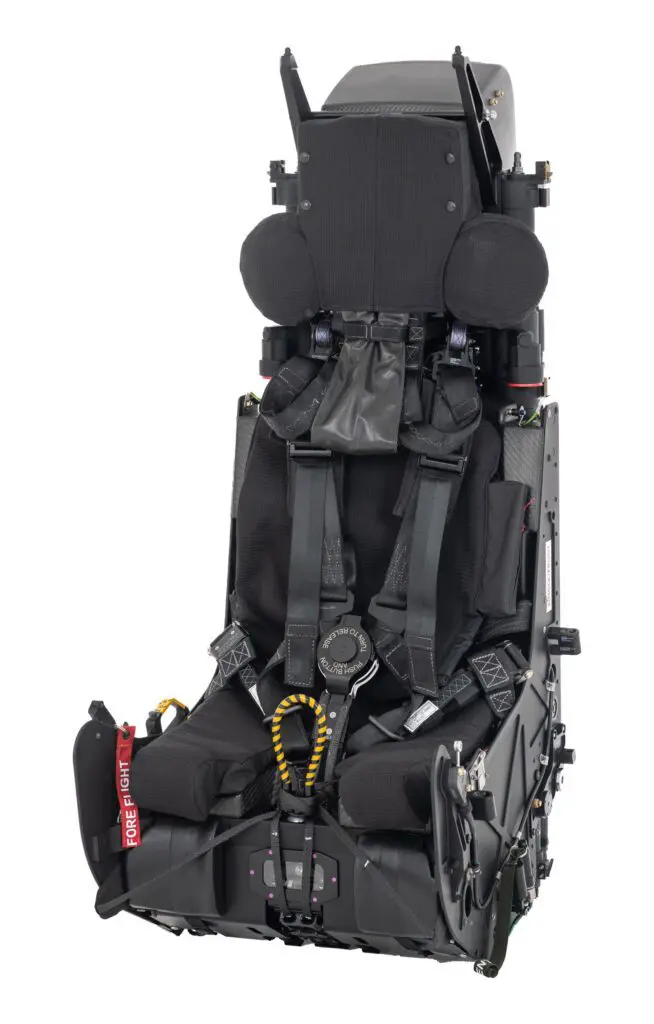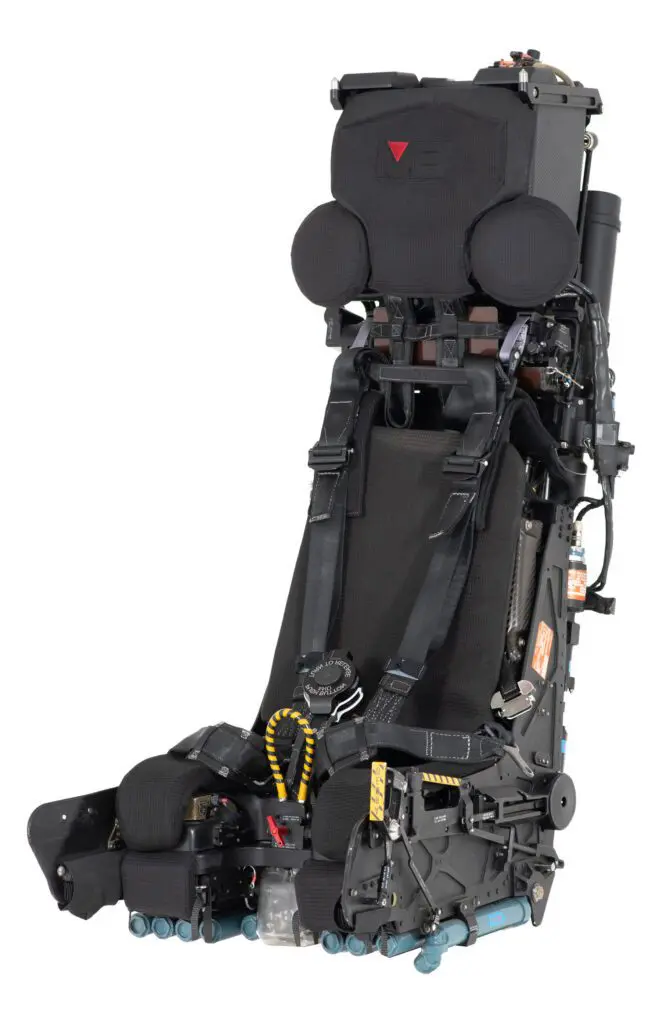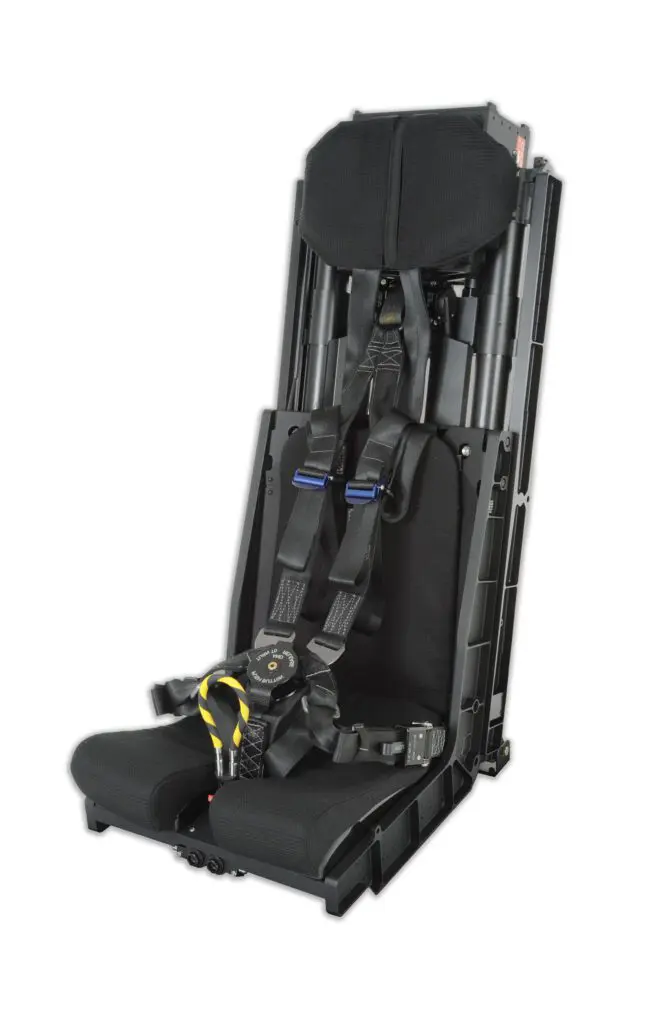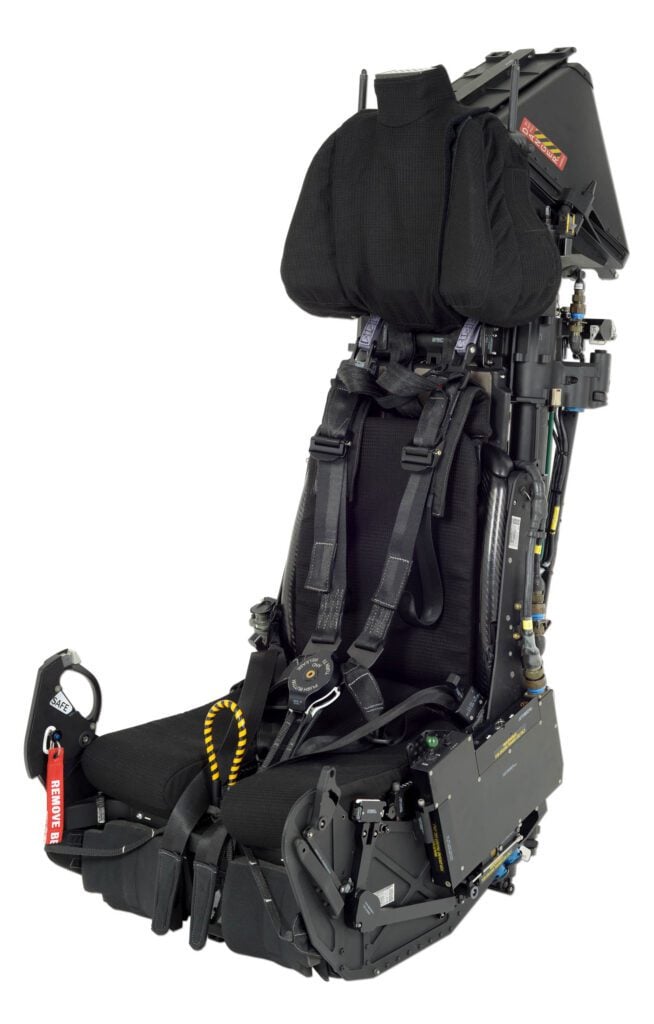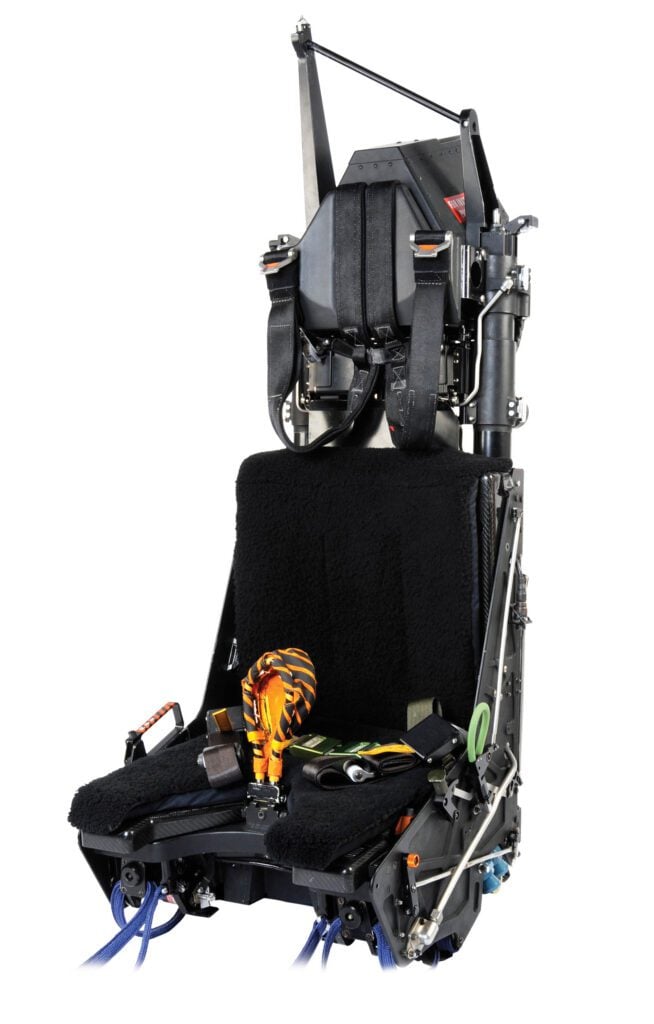What We Do
Mk5 Ejection Seat
An evolution of the Mk4, manufactured to suit the specific requirements of the United States Navy.
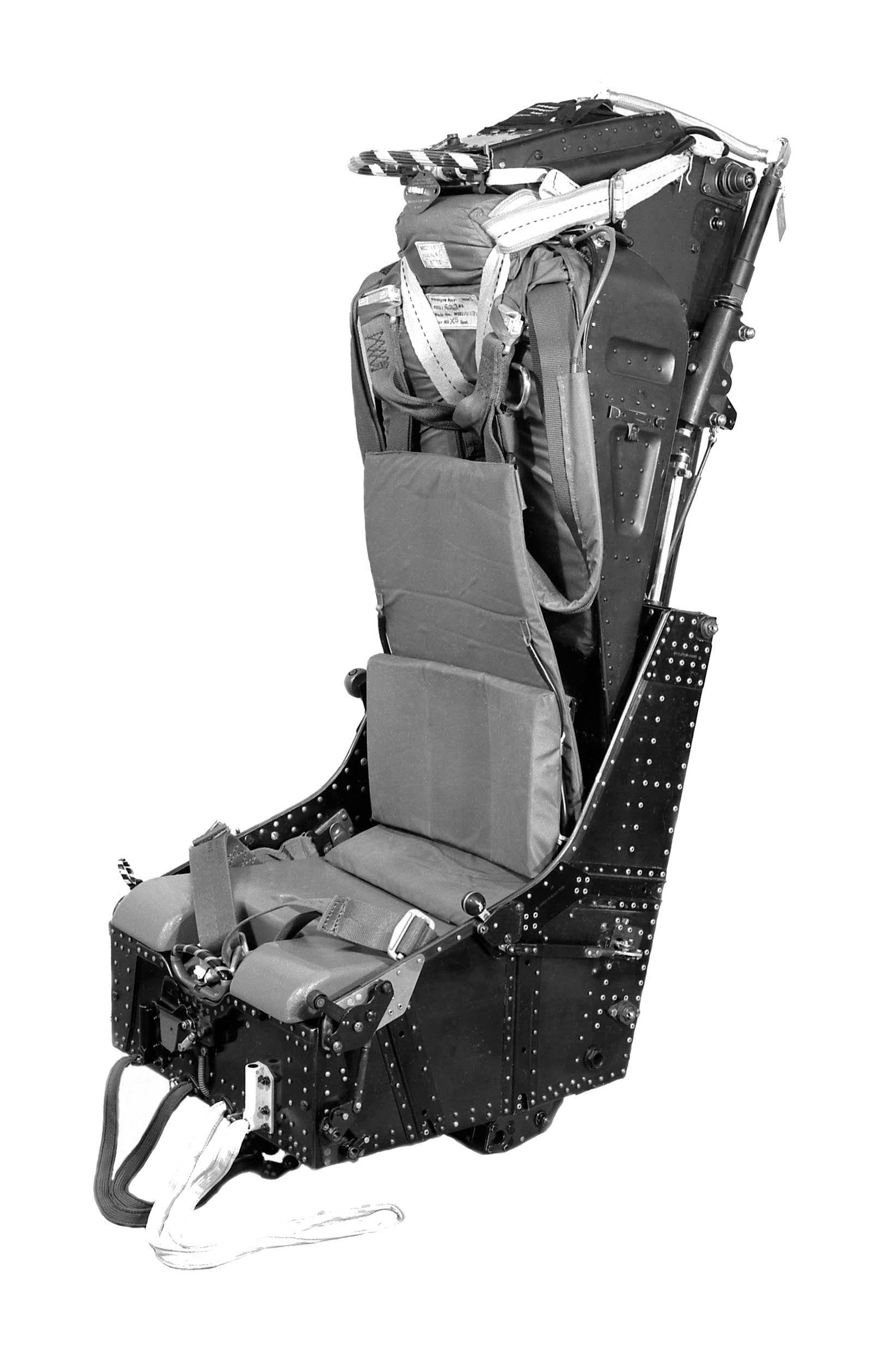
MK5
Introduced into service in 1957
1,649 aircrew lives saved using a Mk5 ejection seat
To suit the special requirements of the United States Navy, the Mk5 seat was introduced in 1957 and its production paralleled to that of the Mk4. In general, the Mk5 seats conformed to the same basic pattern of the Mk4 and included the standard 80 feet per second gun, 1¼ second time delay with g switch and barostatic control, duplex drogue system plus all the other features necessary for their use at all speeds and heights. To meet specific American crash requirements, however, the seat structure and harness were strengthened to withstand deceleration loads of 40g, instead of the 25g British specification, resulting in a slight increase in weight.
In addition, the seats were provided with special canopy breaker peaks on the headbox to provide for the eventuality of having to eject through the canopy, standard practice on the A.5 seat installed in the Grumman 9F-8T Cougar. On the majority of the other Mk5 seats, the American system of jettisoning the canopy was linked up with the face blind firing handle. The low-level capabilities of the Mk5 seat were successfully demonstrated in August 1957, when Flying Officer Sidney Hughes ejected from a Grumman Cougar at the U.S. Naval Air Test Centre, Patuxent River, before a group of high-ranking U.S. Navy Officers. Subsequently, the decision was made to standardise the Martin-Baker Mk5 seats for all United States Navy jet fighters and trainers, and many fuselages were sent to the Company’s factory at Denham for trial installations.
North American Sabre and Republic Thunderflash aircraft of the Norwegian Air Force were the first of many N.A.T.O. aircraft to be flown into Chalgrove Airfield where the installation of Martin-Baker Mk5 seats was made, replacing the original American ejection seats fitted in these aircraft, because the Norwegian Air Force preferred Martin-Baker seats. Altogether the Mk5 seat has been fitted to nearly twenty types of American aircraft, including such advanced aircraft as the McDonnell Phantom, L.T.V. Crusader, and Grumman Intruder.
| Operating Ceiling | 50,000+ ft (15,250m) |
| Minimum height/speed | Zero/90 KIAS |
| Crew boarding mass range | 70.4 to 101.7kg |
| Crew size range | 5th to 95th percentile |
| Maximum Speed for ejection | 600+ KIAS |
| Parachute type | Irvin I 24 |
| Parachute deployment | Drogue assisted |
| Drogue parachute type | Duplex drogues 22in. and 5ft |
| Drogue deployment | Drogue gun. Cartridge generated gas. Initiated by 0.5 sec clockwork time-delay, tripped during ejection sequence |
| Harness type | Combined |
| Ejection seat operation type | Ejection gun |
| Ejection gun | 80 ft/sec One primary cartridge, two secondary cartridges, 72 in. stroke |
| Ejection initiation | Face screen or seat pan firing |
| Barostatic time-release unit | Yes, tripped during ejection sequence, g-restrictor, time-release unit for man/seat |
| Manual override handle | Yes |
| Guillotine | Yes |
| Seat adjustment | Up/down, manual operation |
| Arm restraints | No |
| Leg restraints | Yes, two garters |
| Oxygen supply | Bottled oxygen |
| Personal survival pack | Yes with liferaft |
| Aircrew services | Personal equipment connector (PEC) provides connections for, main oxygen, emergency oxygen, air ventilated suit, anti-g suit and mic/tel |
| Canopy jettison | Yes, aircraft variant dependent |


